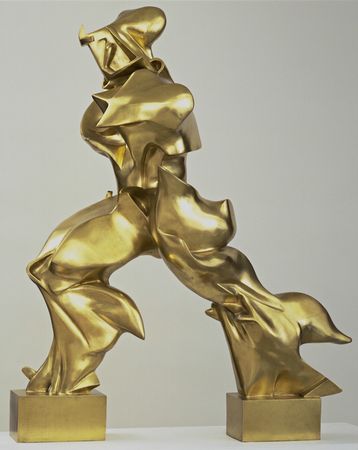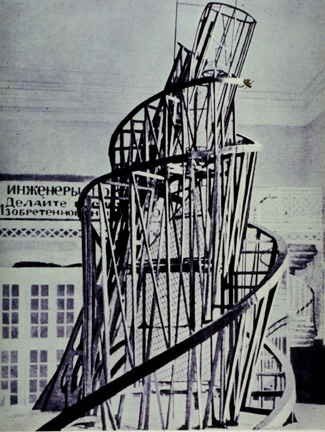“Cubism”
……
Cubism was invented by Pablo Picasso and
Georges Braque at the beginning of the 20th century. It was an art movement/style which used a
different method to represent objects - like a collection of geometrical forms. Although it seemed to be abstract art, real
objects were actually represented. The technique
used was to flatten the objects in a way that the different sides of each
object could be seen from various angles at the same time.
“Art is a lie that makes us realize the truth” - Pablo Picasso
Girl with a Mandolin (Fanny Tellier) in Paris, Spring 1910 - Oil on canvas - by Pablo Picasso
John Golding, (2013), Girl with a Mandolin (Fanny Tellier) Paris, Spring 1910 [ONLINE]. Available at: http://www.artchive.com/viewer/z.html
[Accessed 05 November 13]
Bottle and Fishes (Bouteille et poisons), c. 1910-2 - Oil on canvas - Georges Braque
tate, (2013), Bottle and Fishes (Bouteille et poissons) by Georges Braque [ONLINE]. Available at: http://www.bbc.co.uk/arts/yourpaintings/paintings/bottle-and-fishes-bouteille-et-poissons-197983
[Accessed 05 November 13]
[Accessed 05 November 13]
Art Gallery Atla·. (2013). Pablo Picasso, Georges Braque and Juan Gris pioneers of Cubism.... [Online Video]. 11 June. Available from: https://www.youtube.com/watch?v=mGMPuzv8tew.
[Accessed: 05 November 2013]
“Futurism” ……
This was a progressive art movement that was founded in Milan (Italy) in 1909 by the Italian writer Filippo Tommaso Marinetti. Its members, including Umberto Boccioni, Gino Severini, Carlo Carrà, Giacomo Balla and Luigi Russolo, were not in favour of tradition and wished to free Italy from its past! They were influenced by speed and technology – the modern machinery, as well as the new means of transport and communication – so their works of art expressed movement, energy and growth. To reveal movement they usually used to represent several images of the same object/figure - in slightly different positions - simultaneously. These artists used every medium of art.
"Unique Forms in Space" (1913) by the Italian Futurist Umberto Boccioni

History 303 Europe in the Twentieth Century, (2013),
Umberto Boccioni, "Unique Forms in Space" (1913)
[ONLINE]. Available at: http://pages.uoregon.edu/mccole/HIST303Spring2012/lecturenotes/week1class1and2.html
[Accessed 05 November 13]
The Futurist artist and designer Fortunato Depero established a craft workshop for Futurist Art in Rovereto (Italy) and it operated successfully throughout the 1920s.
Futurism was the first cultural movement that separated itself from nature and elevated the active city life. It was also in alliance with Fascism and searched for a system through radicalism. In doing so, one can say that indeed it was the first radical design movement and immensely influential to subsequent radical design movements.
alex fox·. (2012). A Brief Guide to Futurist Art and Futurism. [Online Video]. 05 June. Available from: http://www.harvardgenerator.com/references/online-video.
[Accessed: 05 November 2013]
"Constructivism" ..........
Before the First World War, progressive
artists, designers and architects from Russia (just like the others living in
Europe) were inspired by Cubism and Futurism.
However, after the revolution of 1917 they searched for new kinds of
expression – this was associated with their longing to have more schemes that
favoured social equality in their country, with regards to the production and
distribution of goods. In Russia, at
that time, the capitalist system existed and that favoured the rich people.
Several artists, including Vladimir Tatlin, Kasimir
Malevich, Alexander Rodchenko, Wassily Kandinsky, Naum Gabo, Antoine Pevsner
and El Lissitzky, started to bring forward a beautiful approach to design that
was related to industrial production. To
publicly declare the aims of Constructivism, in 1920 two manifestos were published and that was how Constructivism
became recognised.
The Constructivists believed that putting
art into practice could bring about social reform, and so they started to design
very practical products and buildings.
They wanted to change the traditional art methods into modern ones,
using industrial materials and techniques (the machine technology). The themes for their artwork were usually geometric, experimental and not so emotional.
Unfortunately, after the Revolution there was
instability in the Government and in the economy of their country, and so
the Constructivists’ work consisted mainly of ceramics, graphics
and exhibition designs. They could not
work much on large-scale projects as they were aiming to. However, I must mention that the artists used the
aims and the ideals of Constructivism not only during the early days of the
Revolution, but throughout the 20th century.
"Monument to the Third International" (1919-20, Moscow) - the most famous installation by Tatlin who was considered as the father of Constructivism

The Art History Archive - Soviet Art , (2013), "Monument to the Third International"
[ONLINE]. Available at: http://www.arthistoryarchive.com/arthistory/constructivism/
[Accessed 05 November 13]
Neguans. (2008). constructivism art (typography in motion). [Online Video]. 03 August. Available from: https://www.youtube.com/watch?v=ZTkR0ixaLJw.
[Accessed: 05 November 2013]
Other References:
Book: Fiell, C.F and P.F, (1999). Design of the 20th Century. 2nd ed. Germany: Taschen
PABLO PICASSO, 2009. The Most Famous Artist of the 20th Century. [ONLINE] Available at: http://www.arthistoryarchive.com/arthistory/cubism/Pablo-Picasso.html.
[Accessed 05 November 13]


No comments:
Post a Comment